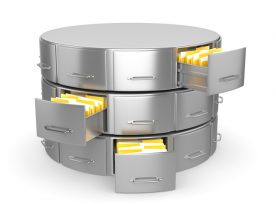On Operational projects that involves heavy data processing on a daily basis, there’s a need to monitor the DB performance. Over a period of time, the workload grows causing potential issues. While there are best practices to handle the processing by adopting DBA strategies (indexing, partitioning, collecting STATS, reorganizing tables/indexes, purging data, allocating bandwidth separately […]
Posts Tagged ‘ETL’
Step by step guide to secure JDBC SSL connection with Postgres in AWS Glue
Have you ever tried connecting a database to AWS Glue using a JDBC SSL encryption connection? It can be quite a puzzle. A few months ago, I faced this exact challenge. I thought it would be easy, but I was wrong! When I searched for help online, I couldn’t find much useful guidance. So, I […]
Navigating Snaplogic Integration: A Beginner’s Guide
As there is rapid growth in businesses going digital, the need to develop scalable and reliable functionalities to connect applications, Cloud environments, on-premises assets have grown. To resolve these complex scenarios, iPaaS seems to be a perfect solution. For example, if a developer needs to connect and transfer huge data from an e-commerce platform to […]
Data Virtualization with Oracle Enterprise Semantic Models
A common symptom of organizations operating at suboptimal performance is when there is a prevalent challenge of dealing with data fragmentation. The fact that enterprise data is siloed within disparate business and operational systems is not the crux to resolve, since there will always be multiple systems. In fact, businesses must adapt to an ever-growing […]
3 Key Takeaways from AWS re:Invent 2023
Now that the dust has settled, the team has had the chance to Re:flect on the events and announcements of AWS re:Invent 2023. Dominating the conversation was the advancement and capabilities of Generative AI across several AWS Services, while not losing sight on the importance of application modernization and cloud migration. Perficient walked away with […]
SQL Server Space Monitoring
On Operational projects that involves heavy data volume load on a daily basis, there’s a need to monitor the DB Disk Space availability. Over a period of time, the size grows occupying the disk space. While there are best practices to handle the size by adopting strategies of Purge for outdated data and add buffer/temp/data/log […]
Windows Folder/Drive Space Monitoring
Often there’s a need to monitor the OS Disk Drive Space availability with the Drive holding ETL operational files (log, cache, temp, bad files etc.). Over a period of time, the # of files grows occupying the disk space. While there are best practices to limit the # of operational files and clear them from […]
An Introduction to ETL Testing
ETL testing is a type of testing technique that requires human participation in order to test the extraction, transformation, and loading of data as it is transferred from source to target according to the given business requirements. Take a look at the block below, where an ETL tool is being used to transfer data from […]
Basic Understanding of Full Load And Incremental Load In ETL (PART 2)
In the last blog PART1, we discussed Full load with the help of an example in the SSIS (SQL Server Integration Service). In this blog, we will discuss the concept of Incremental load with the help of the Talend Open Studio ETL Tool. Incremental Load: The ETL Incremental Loading technique is a fractional loading method. […]
Informatica PowerCenter Overview: Part 1
what is ETL? ETL is a process that extracts the data from different source systems, then transforms the data (like applying calculations, concatenations, etc.), and finally loads the data into the Data Warehouse system. The full form of ETL is Extract, Transform, and Load. What is a data warehouse (DW)? A Data Warehouse (DW) is […]
Slowly Changing Dimension(SCD) TYPE 3 in Informatica PowerCenter
What is a Slowly Changing Dimension? Slowly Changing Dimension (SCD) is a dimension that allows us to store and manage both current and previous data over time in a data warehouse. It is considered and implemented as one of the most critical ETL tasks in tracking the history of dimension records. There are three types […]
Implementation of SCD type 1 in Informatica PowerCenter
What is a Slowly Changing Dimension? A Slowly Changing Dimension (SCD) is a dimension that stores and manages both current and historical data over time in a data warehouse. It is considered and implemented as one of the most critical ETL tasks in tracking the history of dimension records. Type 1 SCDs – Overwriting In […]










